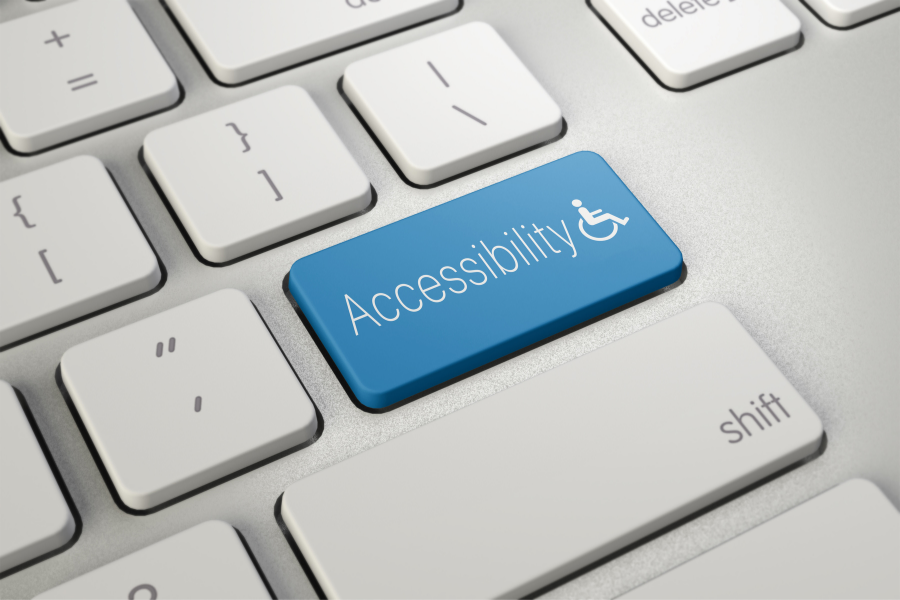According to the World Health Organization, 15% of the world’s population, or approximately one billion people, are diagnosed with a disability. This presents both a challenge and opportunity to provide products that can increase access and reduce inequities. In this article, we examine new adaptive tools and technologies making a difference in the lives of people with a diverse range of abilities.
Stanford University’s Engineering department believes creators and designers have a responsibility to “ensure equal access to the products and technologies they build.” Their “Compassionate Design” course encourages students to come up with ideas and items that can solve everyday problems that people with disabilities regularly face.
Below, we share examples of products and designs already on the market specifically designed to assist people with disabilities with a variety of tasks.
Computers & The Web
Microsoft has developed several products aimed at improving user experience for people with disabilities, such as visual impairment or mobility issues. Their inclusive design strategy involves working with people with disabilities from concept inception to final product.
The Xbox Adaptive Controller features extra-large buttons, 19 ports to accommodate additional specialized controls, and a market-competitive price of $100. Their newest offering is the Surface Adaptive Kit, designed to make surface laptops easier to use for people with disabilities. The kit consists of stickers users can apply to help with various computing tasks. These include:
- Stick-on openers for screens or kickstands;
- Keycap labels for identifying specific buttons;
- Watchband-style labels to help identify cords; and
- Matching labels to help link cords to ports.
For web accessibility, it’s important to mention a new initiative from AudioEye, Inc. Their recently-launched AudioEye A11iance has invited users with disabilities to collaborate on both development and quality assurance for their product line, which focuses on solutions for people with disabilities to help them navigate the web as naturally and efficiently as possible.
AudioEye announced their initiative will “provide income opportunities to people with disabilities and allow them to make key contributions to our product roadmap so that we can continue to deliver top experiences to our clients.”
Recreation & Beauty
In the realm of recreational sports, a golf course in Cincinnati, OH has made access easier for people with disabilities by adding a new type of golf car to their fleet. The single passenger cart enables players to traverse the course while being able to play from a standing position, rather than sitting, even if they typically rely on a cane or wheelchair for standing support.
New initiatives are being rolled out in the beauty industry as well. Application of make-up, skin care, or hygiene products can prove challenging for people with disabilities; however, several new products, often designed by people with disabilities, have significantly changed accessibility for users. Featured products include:
- The Vamp Stamp, which creates a perfect cat’s eye design for those unable to use a pencil-style eyeliner;
- Guide Beauty’s adaptive make-up tools, which include eyeliner, eyebrow, and mascara applicators designed for people of varying abilities;
- Kohl Kreatives’ make-up brushes, which include a collection designed with wider handles to assist those with motor or neurological disabilities, as well as a collection of square-handled brushes with braille stickers and numbered symbols that pair with an online tutorial guide;
- VictoriaLand Beauty’s CyR.U.S. System replaces braille with a collection of universal symbols in a raised design that help users identify the product’s use, plus a raised QR code users can scan for audio information;
- Raised symbols used on Herbal Essences line of shampoos and conditioners to help users distinguish between the two; and
- Degree Inclusive, which combines a larger roll-in applicator with a curved handle and magnetic closures to facilitate one-handed use, as well as a braille label for tactile identification.
3D-Printed Equipment
One of the most wide-spread programs available has been implemented by the Institute on Disabilities in Pennsylvania. Their Assistive Technology ACT Program (known locally as TechOWL) uses federal money to help anyone with a disability who lives in-state to acquire assistive tools.
Devices are lent out for approximately nine weeks at a time and include items such as bottle openers, button fasteners, utensil grips, and more—all designed to help people with disabilities manage activities of daily living (ADL). In addition to the items loaned out, TechOWL also provides free 3D-printed items that people can keep indefinitely.
While TechOWL’s gadgets are loaned only to Pennsylvania residents, they are happy to help people in neighboring states locate similar resources.

